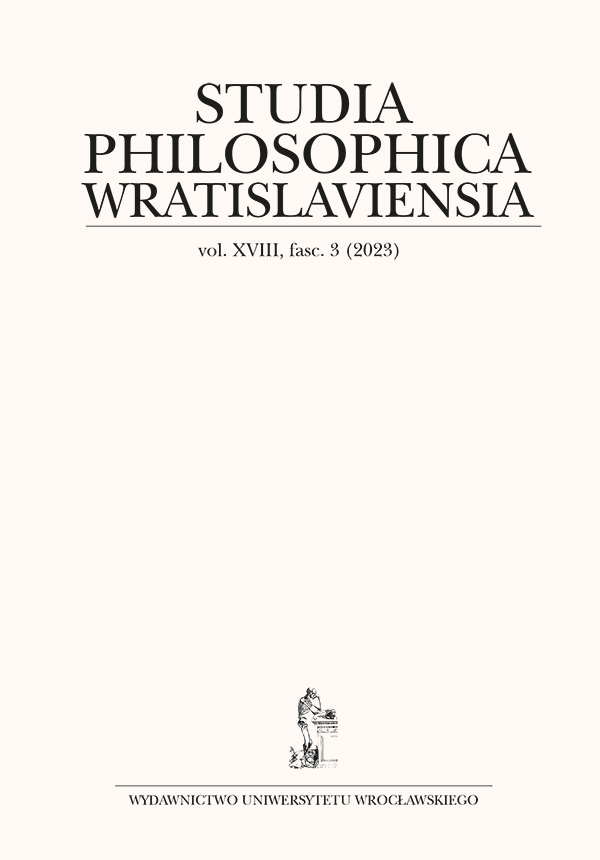

Artykuły

Jung’s concept of the collective unconscious is grounded in the concept of archetype, which he derived from Neoplatonic philosophy. This term has penetrated into subsequent psychological and culturological concepts, becoming popular nowadays in the context of research on culture due to its connection with the symbol, myth, image. Most researchers of Jung’s work forget that this concept appeared in his texts relatively late, and at that time the psychiatrist had already been developing his thought for almost twenty years. He created the concept of the collective unconscious and its main assumptions without this seemingly key concept. Others were used instead, i.e. the primary image, pre-image, imago, psychic dominant. The aim of the article is to show the differences in meaning between the term archetype and earlier concepts, to explain its relationship with the image, and to indicate the philosophical and anthropological grounds on which Jung based his psychoanalytic thought.
Avens R., The Image of the Devil in C. G. Jung’s Psychology, „Journal of Religion and Health” 16 [3] (1977), pp. 196–222.
Bergson H., Ewolucja twórcza, tłum. F. Znaniecki, Kraków 2004.
Brook R., Jung and Phenomenology, London-New York 1991.
Commone A., Il Culto dei Lari e dei Penati a Roma, Roma 2019–2020.
Durkheim E., Elementarne formy życia religijnego. System totemiczny w Australii, tłum. A. Zadrożyńska, Warszawa 1990.
Jung C.G., The Content of the Psychoses, Part II, 1914, [w:] Collected Paper of Analytical Psychology, tłum. M. Elder, C. Long (ed.), London, 1922.
Jung C.G., Dynamika nieświadomości, tłum. R. Reszke, Warszawa 2014.
Jung C.G., Freud and Psychoanalysis, [w:] Collected Works of C. G. Jung, t. 4, New York 2014.
Jung C.G., History of Modern Psychology: Lectures Delivered at ETH Zurich, t. 1, 1933–1934, tłum. E. Falzeder, M. Kyburz J. Peck, E. Falzeder (ed.), London-New York 2019.
Jung C.G., Instinct and Unconscious, [w:] Collected Works of C. G. Jung, t. 8, New York 2014.
Jung C.G., Mysterium Coniunctionis. Studia o dzieleniu i łączeniu przeciwieństw psychicznych w alchemii, tłum. R. Reszke, Warszawa 2002.
Jung C.G., O psychologii i patologii zjawisk tajemnych, tłum. E. Sadowska, Warszawa 1991.
Jung C.G., Die Psychologieder Unbewußten Prozesse, Zürich 1917.
Jung C.G., Rebis, czyli kamień filozofów, tłum. J. Prokopiuk, Warszawa 1989.
Jung C.G., The Spirit in Man, Art and Literature, [w:] Collected Works of C. G. Jung, t. 18, New York 2014.
Jung C.G., The Structure And Dynamics of the Psyche, [w:] Collected Works of C. G. Jung, t. 8, New York 2014.
Jung C.G., Symbole przemiany. Preludium do schizofrenii, tłum. R. Reszke, Warszawa 1998.
Jung C.G., Symbols of Transformation: An Analysis of the Prelude to a Case of Schizophrenia, [w:] Collected Works of C. G. Jung, t. 5, New York 2014.
Jung C.G., Typy psychologiczne, tłum. R. Reszke, Warszawa 1997.
Jung C.G., Wandlungen und Symbole der Libido, Leipzig-Wien 1925.
Laughlin K., Towards A Science of Gnosis: Intimations of An Imaginal Theory of Knowledge, „Quadrant” 45 [2] (2015).
The Letters of Jacob Burckhardt, tłum. A. Dru, London-New York 1955.
Lévy-Bruhl L., Czynności umysłowe w społeczeństwach pierwotnych, tłum. B. Szwarcman-Czarnota, Warszawa 1992.
Mauss M., Socjologia i antropologia, tłum. M. Król, K. Pomian, J. Szacki, Warszawa 2001.
Pajor K., Psychologia archetypów Junga, Warszawa 2004.
Pajor K., Rola archetypu w analitycznej psychologii C. G. Junga, Poznań 1992.
Schopenhauer A., Świat jako wola i przedstawienie, t. 1, tłum. J. Garewicz, Warszawa 1995.
Segal R., Jung and Lévy-Bruhl, „The Journal of Analytical Psychology” 52 [5] (2007), DOI: 10.1111/j.1468-5922.2007.00690.x.
Tomasz z Akwinu, Traktat o człowieku: Summa teologiczna, tłum. S. Świeżawski, Poznań 1956.